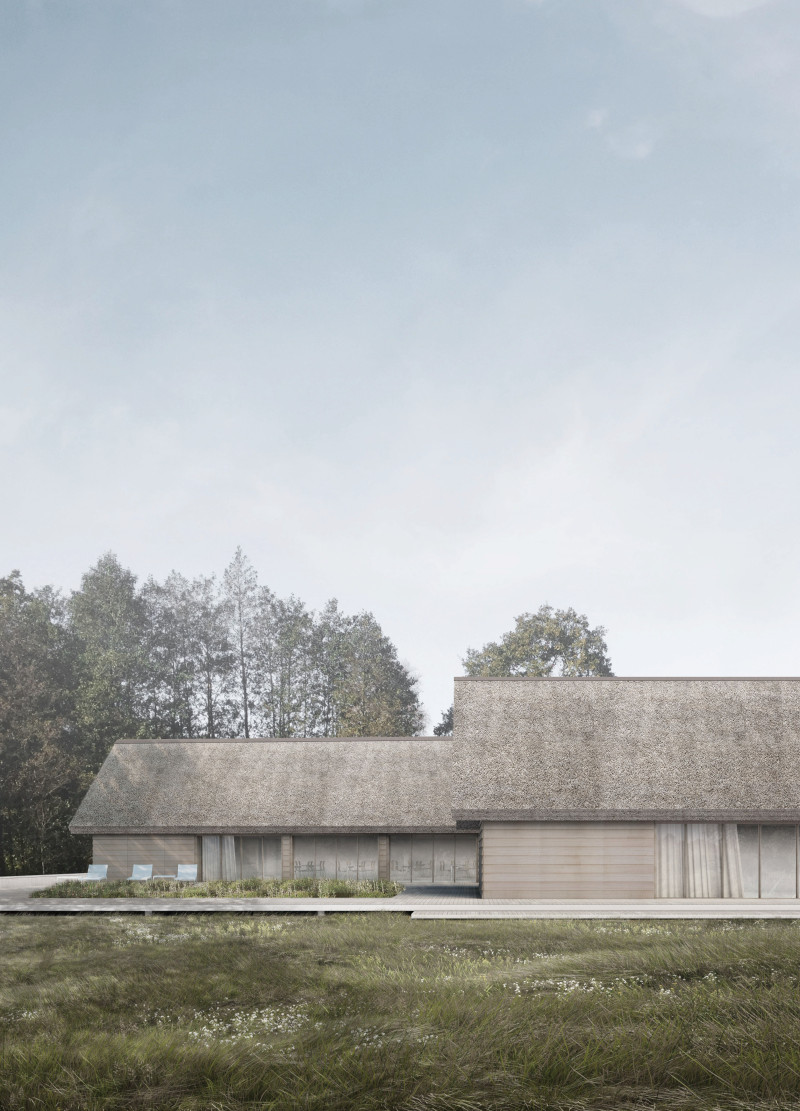5 key facts about this project
The architectural design emerges in a remote landscape, where the relationship between the built environment and nature is a primary focus. The layout features three main structures: a guest house, a spa, and a restaurant. Each building is designed to connect meaningfully with its surrounding environment. The overall concept emphasizes simplicity and sustainability, creating a space that harmonizes with the natural setting over time.
Architectural Concept
The design revolves around the interaction between architecture and its natural context. It seeks to balance practical functions with ecological awareness. By drawing inspiration from local natural elements, the design breaks down artificial barriers between structures and their environments. This modular approach mirrors traditional rural buildings, making the spaces familiar and user-friendly while meeting modern needs.
Spatial Organization
The layout separates the different functions into distinct buildings, promoting clarity and ease of movement. Public spaces are strategically placed to encourage interaction with the landscape. The guest house, positioned near a pond, offers an intimate retreat for visitors. The spa and restaurant, on the other hand, serve both residents and day visitors, fostering a sense of community and connection.
Materiality and Construction
Material choices play a significant role in supporting the design’s sustainability goals. Key materials include wooden beams, horizontal birch coating panels, and a straw roof. These elements not only provide structural support but also enhance the aesthetic appeal of the buildings. Wooden beams add warmth and character, while birch panels improve thermal performance. The straw roof insulates effectively and will blend into the landscape as it ages.
Environmental Integration
The design lifts the buildings off the ground, reducing their impact on the environment. This elevation allows for improved drainage and less disruption to the site. Strategic orientation maximizes natural light and improves thermal comfort throughout the year. These choices lead to architecture that supports its functions while fostering a strong connection to the surrounding nature, encouraging occupants to engage with the landscape.
The outcome is a recognizable design that incorporates local tradition, with structures that age beautifully in their context. Each building creates a dialogue with the landscape, inviting users to appreciate the changing relationship between natural surroundings and human-built spaces.


























